The mining industry is undergoing a profound transformation, driven by advancements in electric vehicles (EVs), autonomous systems, and smart fleet technologies. These innovations are not merely trends but are reshaping the very fabric of mining operations, enhancing efficiency, safety, and sustainability. This article delves into the future of mine spec vehicles, exploring how these technologies are revolutionizing the industry.
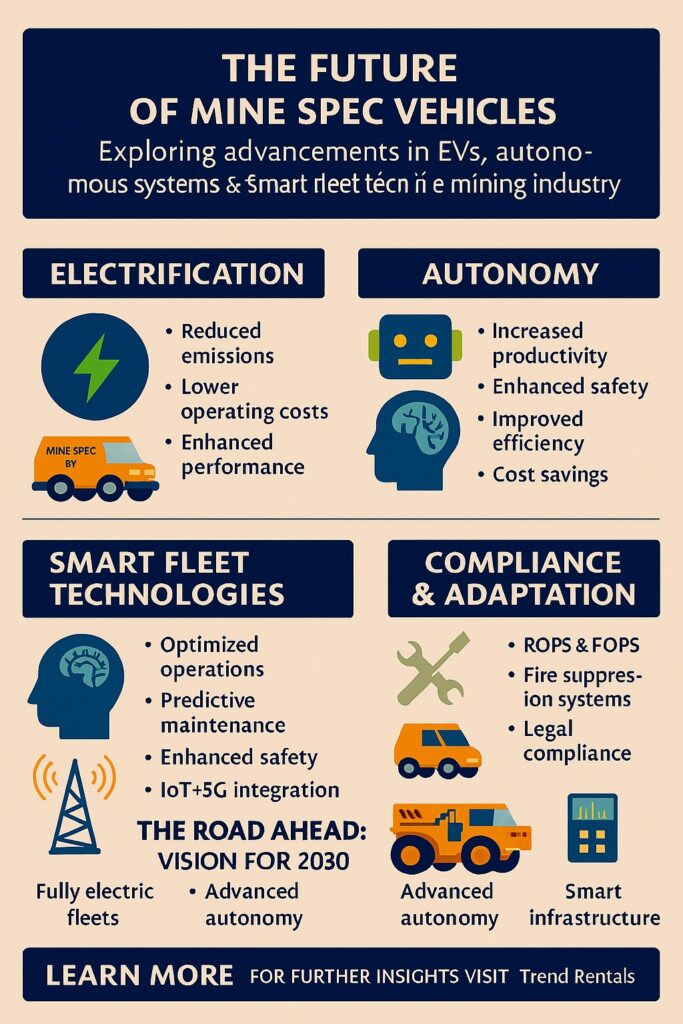
⚡ Electrification: Powering the Green Revolution
The Rise of Electric Mine Spec Vehicles
Electric mine spec vehicles are rapidly becoming the cornerstone of sustainable mining operations. Companies like Fortescue Metals Group are leading the charge, having secured a $2.8 billion deal with Liebherr to convert two-thirds of their fleet to zero-emission battery technology. This includes 360 autonomous electric trucks, 55 electric excavators, and 60 battery-powered dozers, setting a global benchmark for green mining practices.
In Australia, the adaptation of vehicles like the Toyota bZ4X for mine sites further exemplifies this shift. Modified to withstand the harsh conditions of the Pilbara region, these vehicles are part of a broader strategy to decarbonize light fleet operations in remote areas.
Advantages of Electric Mine Spec Vehicles
Electric mine spec vehicles offer several advantages over their diesel counterparts:
- Reduced Emissions: Electric vehicles produce zero tailpipe emissions, contributing to cleaner air quality and a reduction in greenhouse gas emissions.
- Lower Operating Costs: Electric vehicles have fewer moving parts, leading to reduced maintenance costs and longer vehicle lifespans.
- Enhanced Performance: Electric motors provide instant torque, improving acceleration and overall vehicle performance.
- Noise Reduction: Electric vehicles operate more quietly, reducing noise pollution in mining environments.
- Energy Efficiency: Electric vehicles are more energy-efficient, converting a higher percentage of energy from the battery to power the wheels.
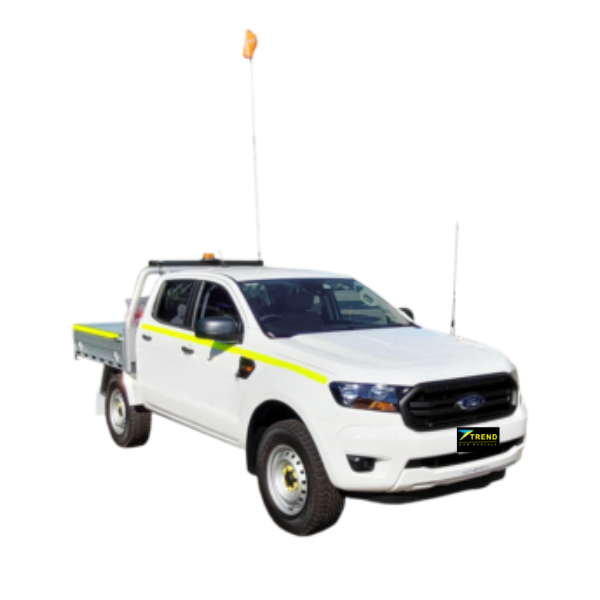
🤖 Autonomy: The Dawn of Driverless Mining
Autonomous Haulage Systems (AHS)
Australia is at the forefront of autonomous mining technology. BHP, for instance, has been operating autonomous haul trucks at its Yandicoogina and Nammuldi mines since 2016, transporting nearly five billion tonnes of material across ten sites.
The integration of autonomous systems extends beyond haul trucks. Companies like Scania and Regroup are set to launch the first-ever fleet of autonomous in-pit mining trucks in Australia’s Pilbara region by late 2025, marking a significant step towards sustainable mining with reduced emissions and advanced autonomous solutions.
Benefits of Autonomous Mining Vehicles
The adoption of autonomous mining vehicles brings several benefits:
- Increased Productivity: Autonomous vehicles can operate 24/7 without the need for rest, leading to increased productivity.
- Enhanced Safety: By removing human operators from hazardous environments, the risk of accidents and injuries is reduced.
- Improved Efficiency: Autonomous vehicles can optimize routes and operations, leading to more efficient mining processes.
- Cost Savings: Reduced labor costs and improved efficiency contribute to significant cost savings.
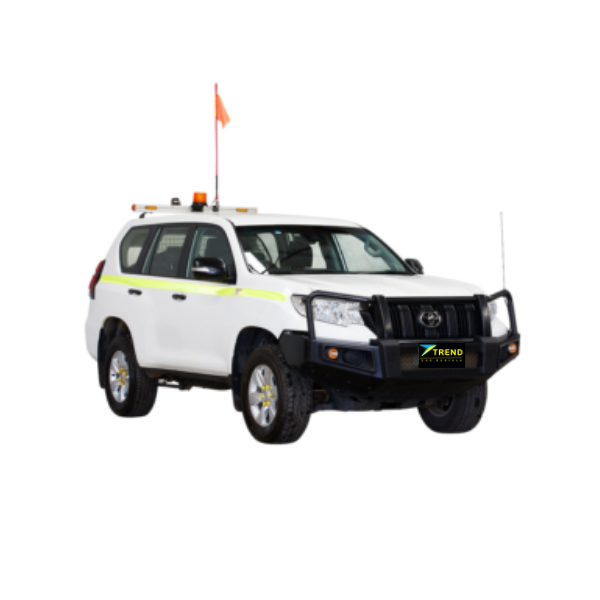
🧠 Smart Fleet Technologies: The Brain Behind the Machines
Intelligent Fleet Management
The backbone of modern mining operations lies in intelligent fleet management systems. These systems leverage real-time data analytics, GPS tracking, and predictive maintenance to optimize fleet performance. By monitoring vehicle health and performance metrics, operators can proactively address issues, reducing downtime and extending the lifespan of equipment.
Integration with IoT and 5G Networks
The deployment of 5G networks on mining sites facilitates seamless communication between autonomous vehicles. This connectivity enables real-time data exchange, enhancing situational awareness and coordination among vehicles. Additionally, the integration of Internet of Things (IoT) devices allows for continuous monitoring of environmental conditions, ensuring that vehicles operate within optimal parameters.
Benefits of Smart Fleet Technologies
Implementing smart fleet technologies offers several advantages:
- Optimized Operations: Real-time data allows for the optimization of routes and schedules, improving overall operational efficiency.
- Predictive Maintenance: Monitoring vehicle health enables predictive maintenance, reducing unexpected breakdowns and downtime.
- Enhanced Safety: Continuous monitoring of environmental conditions and vehicle performance contributes to a safer working environment.
- Cost Efficiency: Optimized operations and predictive maintenance lead to cost savings and improved profitability.
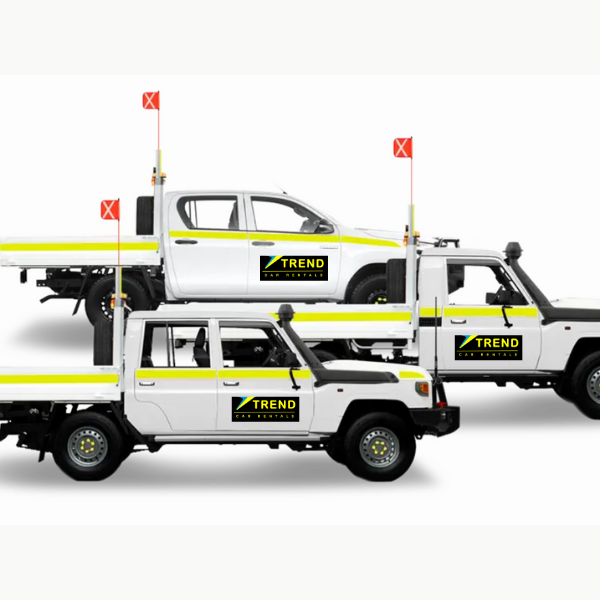
🛠️ Compliance and Adaptation: Meeting Australian Standards
In Australia, mine spec vehicles must adhere to stringent safety and operational standards. These requirements include modifications such as Roll-Over Protective Structures (ROPS), Falling Object Protective Structures (FOPS), fire suppression systems, and battery isolation switches. Companies like Corefleet provide tailored solutions to ensure that vehicles meet these specifications, facilitating smooth operations across various mining sites.
Importance of Compliance
Adhering to mine spec requirements is crucial for several reasons:
- Safety: Ensures the protection of operators and personnel working on mining sites.
- Legal Compliance: Meets regulatory requirements set by Australian authorities.
- Operational Efficiency: Standardized vehicles streamline operations and reduce the risk of equipment failure.
- Environmental Responsibility: Compliance with environmental standards contributes to sustainable mining practices.
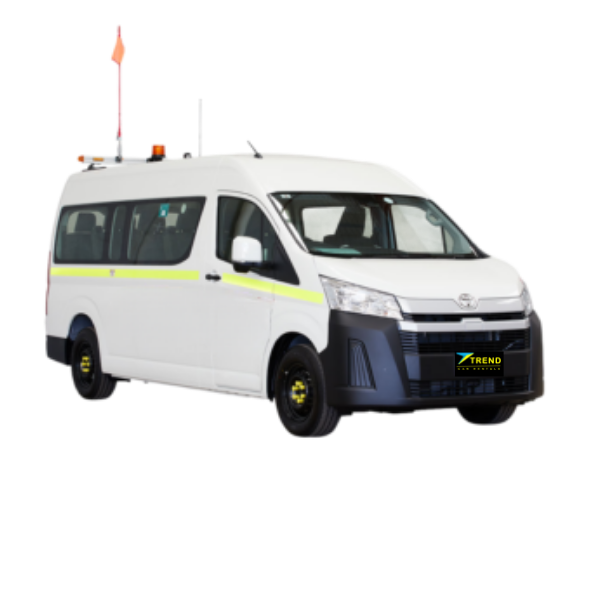
🔮 The Road Ahead: A Vision for 2030
Looking towards 2030, the mining industry envisions a fully integrated ecosystem where electric, autonomous, and smart technologies converge. This vision includes:
- Fully Electric Fleets: All mining vehicles operating on renewable energy sources, reducing carbon footprints.
- Advanced Autonomy: Vehicles capable of operating in complex environments with minimal human intervention.
- Smart Infrastructure: Mining sites equipped with intelligent systems for resource management and safety monitoring.
This transformation is not just technological but also cultural, requiring a shift in mindset towards innovation, sustainability, and collaboration.
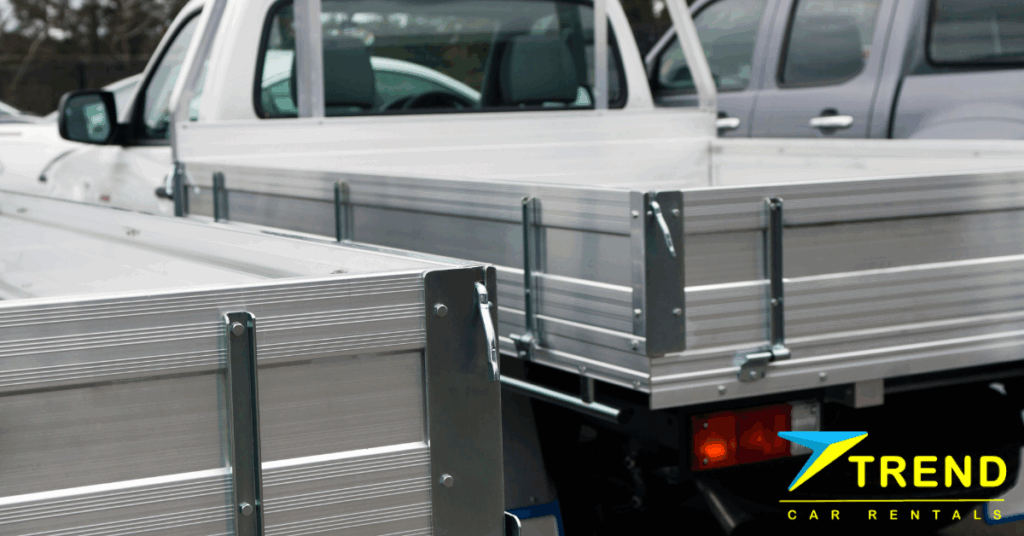
🔗 Learn More
For more insights into the evolving landscape of mine spec vehicles and fleet management solutions, visit Trend Rentals.